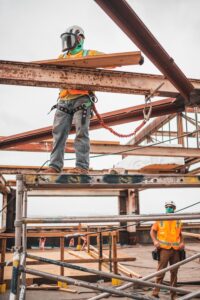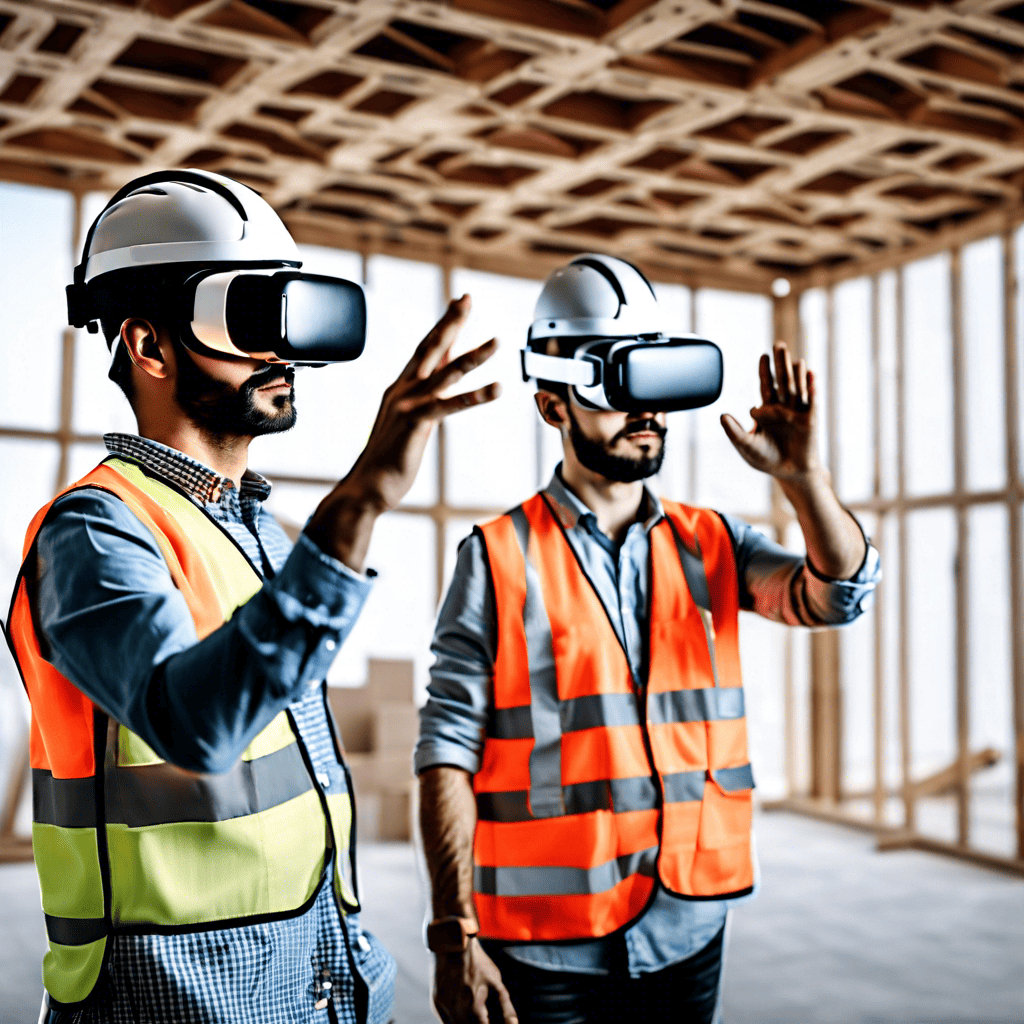Construction Virtual Reality (VR) Safety Simulation
Virtual reality (VR) is a powerful tool that can be used for a variety of purposes, including safety simulation. Moreover, ensuring the safety of workers is paramount in construction projects. The inherent hazards of construction sites, including the risk of falls from heights, fire, slippery floors, and exposure to chemicals, underscore the importance of prioritizing and safeguarding the well-being of those involved.
There are many document for previous incident in construction. However, it is hard to manually read all of those document. Therefore, VR simulations is believed to improve training safety simulation. VR provide trainees with a realistic and immersive experience that allows them to practice their skills in a safe environment. This can be especially beneficial for training in high-risk situations, such as working with hazardous materials or operating heavy machinery.

Category List
- 3D Point Cloud
- Artificial Intelligence
- Asset Management
- Digital Twin
- Featured
- Hardware
- Knowledge Graph
- LiDAR
- News
- Site Monitoring
- Vegetation Monitoring
- Virtual Reality
Recent Post
- Photogrammetry vs Image Processing: What’s the Difference and How Are They Used?
- Soil Adjusted Vegetation Index (SAVI): Definition and Application
- NDWI (Normalized Difference Water Index): Identifying Water Bodies with Remote Sensing
- Construction Management in the Digital Era: How GeoAI Transforms Projects with Data Analytics and AI
- What is Near Infrared (NIR)?
How VR Safety Simulation Work
Virtual Reality safety simulations are created using 3D modeling and software such as Unity. Trainees wear a VR headset that displays the simulated environment. They can interact with the environment using VR controllers or other input devices. The VR simulation can be programmed to respond to the trainee’s actions. For example, if the trainee makes a mistake, the simulation can show them the consequences of their actions. This can help trainees to learn from their mistakes and improve their skills.
In addition, VR Simulation has the capability to replicate a diverse array of safety scenarios, encompassing fire emergencies, electrical hazards, chemical spills, equipment malfunctions, and other situations. These simulations are carefully customized to address the unique safety requirements of various industries and specific job roles, providing a comprehensive and tailored training experience.
For further development, the VR simulation is not only used for safety training before the construction start. To further its development, the VR simulation is not limited to being used solely for safety training before the construction begins. It can further linked into 4D BIM (i.e. 3D BIM model with additional schedule information) to facilitate safety visualization in different location and time.
Data Needed for VR Safety Simulation
In order to create an effective VR simulation, developers need to collect a variety of data. This data can include:
- The layout of the environment: This data is used to create a realistic and accurate simulation of the workplace. We can use 3D BIM model to visualize the layout.
- The tasks that trainees will need to perform: This data is used to design the scenarios that trainees will experience.
- The potential hazards that trainees may encounter: This data is used to create realistic and challenging scenarios. The data can be extracted from previous accidents and safety regulation.
- Additional data: This data will be customized based on the goal of VR visualization. The data included such as project schedule or project cost to link the safety incident into time and cost of the project.
Benefits of VR Safety Simulation
There are many benefits to using Immersive experience for safety simulation. These benefits include:
- Increased safety: VR simulations allow trainees to practice their skills in a safe environment, which can help to reduce the risk of injuries in the real world.
- Improved learning: VR simulations can provide trainees with a more immersive and engaging learning experience, which can lead to better knowledge retention.
- Reduced costs: VR simulations can be less expensive than traditional training methods, such as on-the-job training.
- Increased accessibility: VR simulations can be used to train employees from anywhere in the world.
The Future of Virtual Reality Simulation
Virtual Reality simulations are still a relatively new technology, but they have the potential to revolutionize the way we train employees. Organizations can adopt VR simulation to learn safety protocols, simulate emergency responses, and recognize hazards in different time frames. As VR technology continues to develop, we can expect to see even more realistic and immersive simulations that can help to improve safety and learning in construction industries.
Frequently Asked Question
VR Safety Simulation is a virtual reality training program designed to simulate various safety scenarios to educate and train individuals in a realistic, risk-free environment.
By immersing users in lifelike scenarios, VR Simulation allows individuals to practice and learn safety protocols, emergency responses, and hazard recognition in a controlled virtual setting. Additionally, this immersive experience enhances the effectiveness of training by providing a realistic and risk-free environment for skill development.
Yes, VR Simulation can be customized for various industries such as construction, manufacturing, healthcare, and others, ensuring that the training content aligns with industry-specific safety requirements.
Users typically need VR headsets and controllers to participate in the simulation. The specific hardware requirements may vary depending on the VR platform used.
While VR Simulation is a powerful complement to traditional training methods, it is not intended to replace them entirely. It enhances training by providing an immersive and interactive supplement to traditional classroom or online safety courses.
